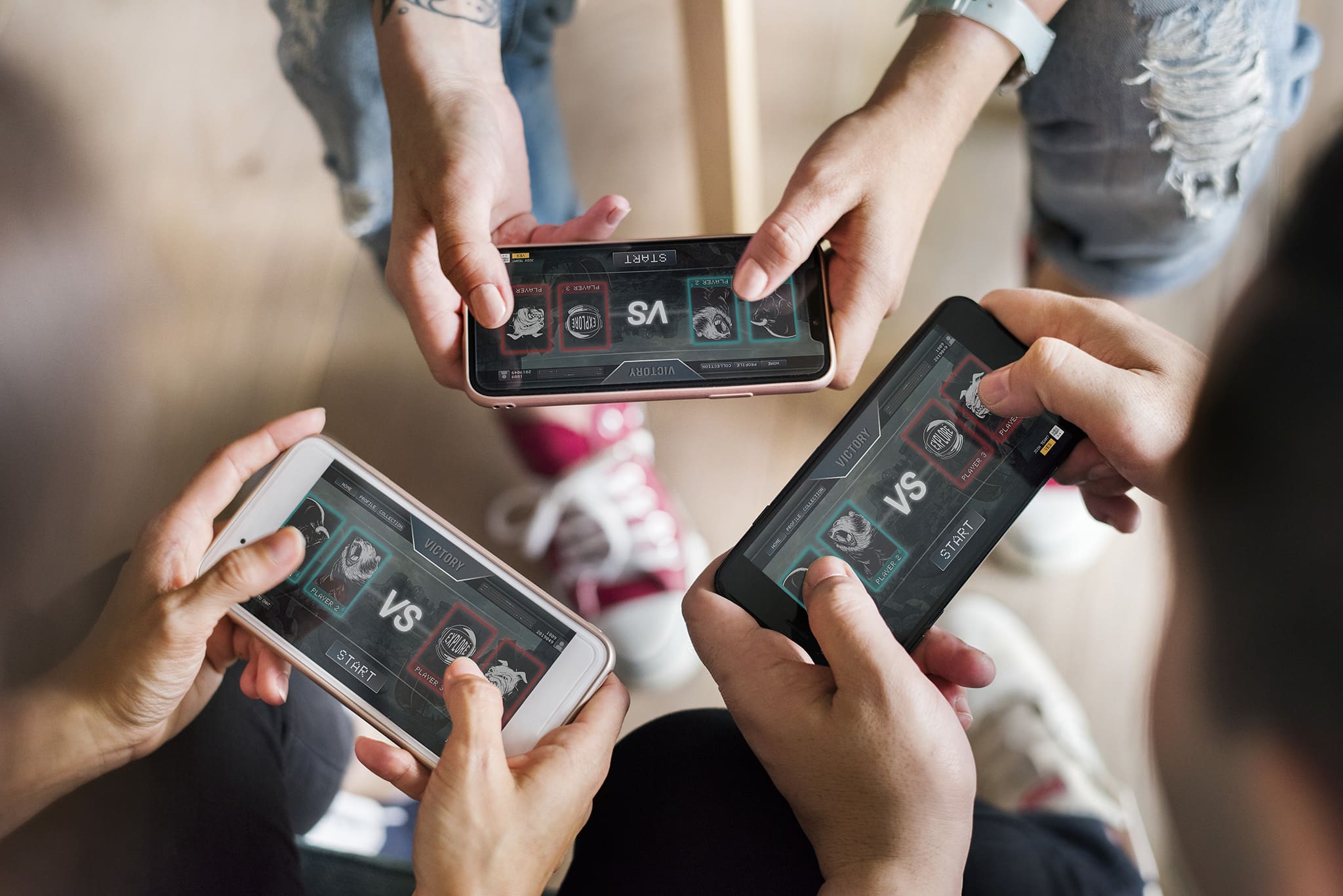For decades, video games have captivated billions with their unique ability to motivate, engage, and hold our attention for hours on end. They tap into fundamental human desires for achievement, competition, status, and reward. Now, what if you could harness that same psychological power and apply it to your business? That is the revolutionary promise of gamification. The future of digital engagement is not just about providing a service or a product; it’s about creating an experience. For businesses looking to stand out in a crowded market, the strategic development of gamification apps is rapidly becoming an essential tool for capturing and retaining customer loyalty and employee motivation.
This is not about turning your business into a video game. Instead, it’s about strategically borrowing the elements that make games so compelling and integrating them into your existing digital platforms. The goal is to transform mundane tasks—like completing a profile, learning a new skill, or making a purchase—into rewarding and enjoyable interactions.
What is Business Gamification?
At its core, business gamification is the strategic integration of game-like mechanics and design principles into non-game contexts. This means taking elements like points, badges, leaderboards, and progress bars and applying them to a business application, website, or internal process. The primary objective is to engage users, motivate specific behaviors, and solve real-world business problems. It’s a powerful approach that leverages the science of human motivation to make routine interactions more compelling.
It is crucial to differentiate this from actual game development. While both use similar psychological triggers, their goals are different. A video game’s primary purpose is entertainment. In contrast, the purpose of business gamification is to drive a specific, measurable business outcome—whether that’s increasing customer retention, improving employee training completion rates, or encouraging healthier lifestyle choices through a wellness app. It’s about creating motivation, not just distraction. When done correctly, this strategy transforms a passive user into an active, engaged participant in your brand’s ecosystem.
Relevance in 2025: Beyond the Hype
In the digital landscape of 2025, the battle for user attention is fiercer than ever. Consumers are bombarded with a constant stream of information, notifications, and advertisements, leading to a phenomenon known as “digital fatigue.” Simply having a functional app or website is no longer enough to cut through the noise. This is where gamification has evolved from a trendy buzzword into a critical component of a modern digital strategy.
The relevance is amplified by generational shifts. Younger audiences, particularly Millennials and Gen Z, grew up in a world where gaming was a mainstream activity. They are digital natives who expect and respond to more interactive, dynamic, and engaging online experiences. For these users, gamification apps don’t feel like a novelty; they feel like a natural and intuitive way to interact with a brand. They are accustomed to tracking progress, earning rewards, and engaging in friendly competition. As this demographic’s purchasing power grows, businesses that fail to adapt to their expectations will be left behind. Building these engaging mobile game-like apps often requires the specialized knowledge of a Game Development Company that understands the deep psychology of what makes an experience compelling and fun.
Benefits: Why Businesses Should Invest in Gamification Apps
The applications of gamification are vast, and the return on investment can be seen across virtually every department of an organization. From marketing and sales to human resources, the benefits are tangible and significant.
Boosting Customer Engagement and Loyalty
This is the most well-known benefit of business gamification. By incorporating mechanics like points, badges, and levels, you can transform the customer experience from transactional to relational. The Starbucks Rewards app is a classic example: customers earn “stars” for every purchase, which unlocks different tiers of rewards. This simple system encourages repeat business and creates a powerful sense of loyalty. Similarly, the language-learning app Duolingo uses a “streak” feature to motivate users to practice every day. These mobile game-like apps turn customers into dedicated fans who are invested in their own progress within your brand’s ecosystem.
Driving Sales and Conversions
Gamification can be a powerful tool to guide users through the sales funnel. For instance, an e-commerce site can use a progress bar to show a customer how close they are to unlocking free shipping, motivating them to add one more item to their cart. A financial services app might offer badges for setting up a savings goal or linking a new account. These mechanics provide gentle nudges and positive reinforcement that encourage users to take desired actions, directly impacting your bottom line. An experienced Mobile App Development Agency can help design user journeys that seamlessly integrate these motivational triggers.
Improving Employee Training and Productivity
The power of gamification is not limited to customers. Internal business gamification is an exploding field used to enhance employee performance and satisfaction. Onboarding can be transformed from a series of boring videos into an interactive journey where new hires unlock achievements as they complete modules. Sales teams can compete on a live leaderboard for monthly bonuses, fostering healthy competition. Companies can even use gamification apps to promote wellness, rewarding employees for achieving fitness goals.
Enhancing Data Collection
In the age of personalization, data is gold. However, customers are often reluctant to fill out long forms or surveys. Gamification provides a solution by making data collection a fun and voluntary part of the user experience. A cosmetics brand could create a “What’s Your Skincare Persona?” quiz that not only engages the user but also collects valuable data about their skin type and preferences. This allows for deeper personalization and more effective marketing.
Types of Gamification and Key Mechanics
To build successful mobile game-like apps, it’s important to understand the core components that drive the experience. While there are countless variations, most strategies are built on a few key mechanics.
- Points and Rewards: This is the most fundamental element. Points are a numerical representation of a user’s progress and achievements. These points can then be redeemed for tangible rewards, such as discounts, exclusive content, or special status.
- Badges and Achievements: These are visual representations of accomplishment. They cater to the human need for status, recognition, and collection. Earning a “Super Saver” badge or a “Marathon Learner” achievement provides a powerful psychological boost.
- Leaderboards: These introduce a social and competitive element. By showing users how they rank against their friends or the wider community, leaderboards can be a powerful motivator for those who are driven by competition.
- Progress Bars and Levels: These mechanics provide a clear visual representation of a user’s journey. Seeing a progress bar inch closer to 100% or “leveling up” creates a compelling sense of forward momentum and motivates users to complete the task.
Integrating these features requires a thoughtful approach to create a balanced and meaningful experience, often demanding custom Software Development Solutions.
How to Implement a Successful Gamification Strategy
Simply throwing points and badges at an app is not a strategy. A successful implementation requires careful planning and a deep understanding of your audience.
First, you must define clear business objectives. What specific behavior are you trying to encourage? Is it more frequent purchases, higher completion rates for training modules, or more user-generated content? Your gamification mechanics must be directly tied to these goals. Second, you must deeply understand your audience. What truly motivates them? Are they driven by competition, collaboration, social recognition, or personal achievement? Your strategy must be tailored to their psychological drivers. This crucial discovery phase is a key part of professional Product Development Services. Finally, the experience must be balanced and feel meaningful. The challenges should be achievable but not trivial, and the rewards must feel valuable and worth the effort. The best mobile game-like apps feel like a natural and enjoyable extension of the core product, not a tacked-on gimmick. This often requires the expertise of a Custom App Development Company to ensure a seamless integration.
Conclusion
The conversation around business gamification has matured. It is no longer a question of if businesses should use game mechanics, but how they can use them most effectively. The strategies that once felt like novelties are now proven, powerful tools for building lasting relationships in a digitally saturated world. By tapping into the same psychological drivers that make games so compelling, businesses can create experiences that are not only more engaging but also more human.
At Wildnet Edge, we see the next evolution of this trend in the fusion of gamification with artificial intelligence. Our AI-first approach enables the creation of dynamic, adaptive gamification apps. Imagine a system that analyzes a user’s skill level in real-time and adjusts the difficulty of challenges to keep them in a perfect state of “flow.” Picture a loyalty program that uses AI to predict the most motivating reward for each individual customer. This is the future we build: not just gamified systems, but intelligent motivation engines designed to unlock the full potential of your users.
FAQs
A game is primarily designed for entertainment. A gamified app, on the other hand, is a non-game application (like a banking, fitness, or learning app) that incorporates game-like elements (like points, badges, or leaderboards) to motivate specific user behaviors and achieve a business goal.
Yes, the principles of motivation are universal. Gamification has been successfully applied across a vast range of industries, including retail (loyalty programs), education (learning apps), finance (savings goals), healthcare (wellness challenges), and corporate training (onboarding modules).
The most common mechanics include points systems for tracking progress, badges or trophies for achievements, leaderboards for competition, progress bars to visualize completion, and levels or tiers that unlock new privileges or rewards.
The ROI is measured by tracking the key business metrics the gamification strategy was designed to influence. This could include increases in user engagement (daily active users), customer retention rates, conversion rates, average order value, or employee training completion rates.
Yes, creating effective mobile game-like apps requires more than just standard app development skills. It benefits greatly from developers and designers who understand game design principles, user psychology, and how to create a balanced and motivating reward system. Partnering with a developer with game or gamification experience is highly recommended.

Nitin Agarwal is a veteran in custom software development. He is fascinated by how software can turn ideas into real-world solutions. With extensive experience designing scalable and efficient systems, he focuses on creating software that delivers tangible results. Nitin enjoys exploring emerging technologies, taking on challenging projects, and mentoring teams to bring ideas to life. He believes that good software is not just about code; it’s about understanding problems and creating value for users. For him, great software combines thoughtful design, clever engineering, and a clear understanding of the problems it’s meant to solve.
 sales@wildnetedge.com
sales@wildnetedge.com +1 (212) 901 8616
+1 (212) 901 8616 +1 (437) 225-7733
+1 (437) 225-7733































